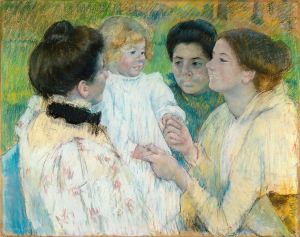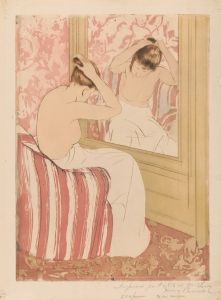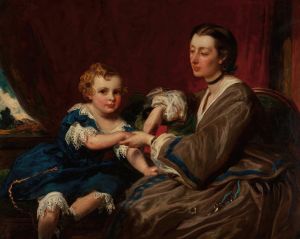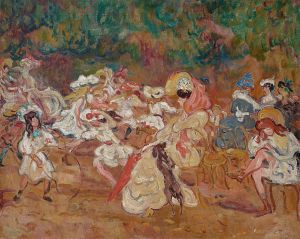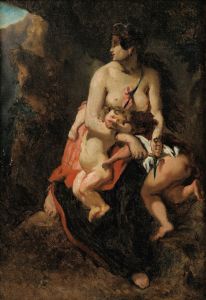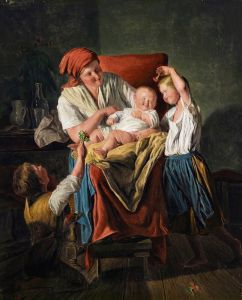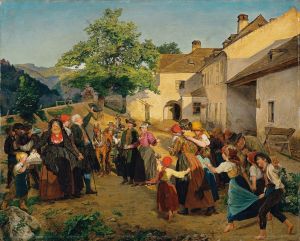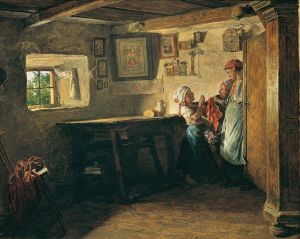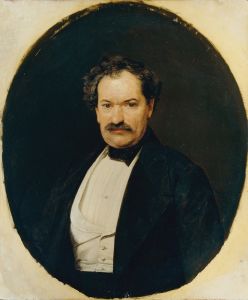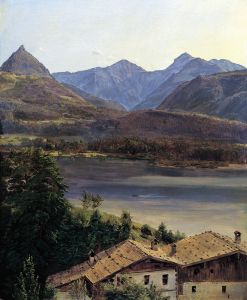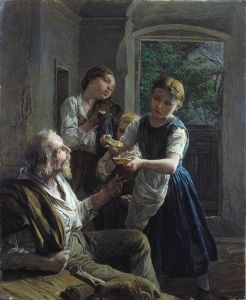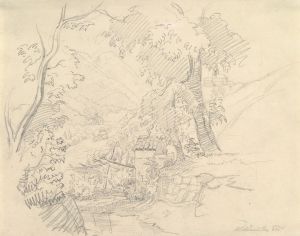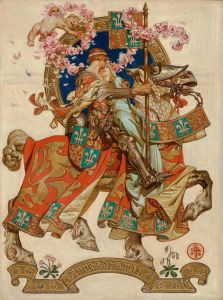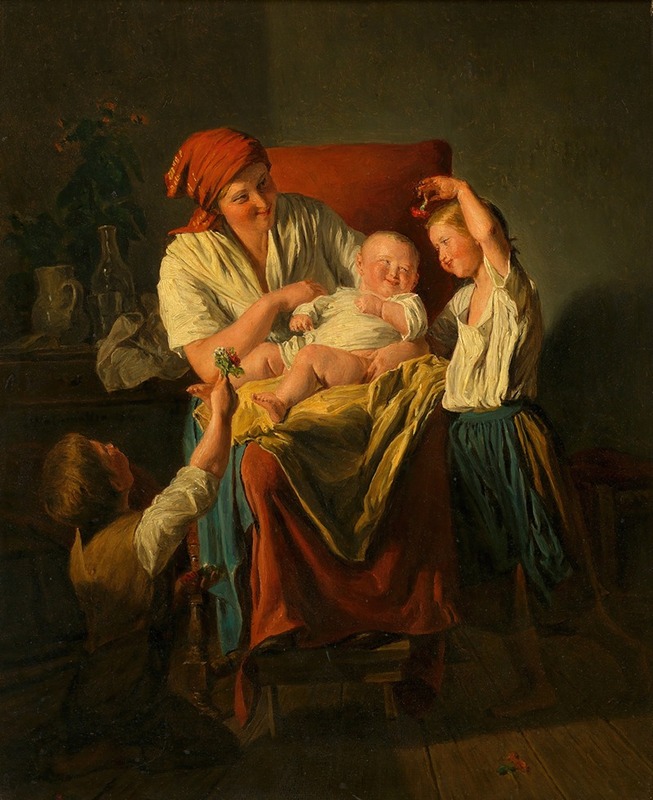
Mutterglück
A hand-painted replica of Ferdinand Georg Waldmüller’s masterpiece Mutterglück, meticulously crafted by professional artists to capture the true essence of the original. Each piece is created with museum-quality canvas and rare mineral pigments, carefully painted by experienced artists with delicate brushstrokes and rich, layered colors to perfectly recreate the texture of the original artwork. Unlike machine-printed reproductions, this hand-painted version brings the painting to life, infused with the artist’s emotions and skill in every stroke. Whether for personal collection or home decoration, it instantly elevates the artistic atmosphere of any space.
Ferdinand Georg Waldmüller was an Austrian painter known for his contribution to the Biedermeier period, a time characterized by a focus on realism and the depiction of everyday life. One of his notable works is "Mutterglück," which translates to "Mother's Joy" in English. This painting exemplifies Waldmüller's skill in capturing intimate and tender moments, a hallmark of his artistic style.
"Mutterglück" is a genre painting that reflects Waldmüller's interest in domestic scenes and the beauty of family life. The painting portrays a mother with her child, emphasizing the bond and affection between them. Waldmüller was adept at using light and color to enhance the emotional depth of his subjects, and this work is no exception. The use of natural light and soft tones creates a warm and inviting atmosphere, drawing the viewer into the serene and loving world of the subjects.
Waldmüller's attention to detail is evident in the realistic depiction of the figures and their surroundings. His ability to render textures and materials with precision adds to the lifelike quality of the painting. The clothing, furnishings, and other elements in the scene are meticulously painted, showcasing Waldmüller's technical proficiency and his dedication to realism.
The Biedermeier period, during which Waldmüller created "Mutterglück," was a time of political stability and economic growth in Austria, following the Napoleonic Wars. This era saw a shift in artistic focus towards the middle class and their domestic lives. Artists like Waldmüller sought to capture the essence of everyday experiences, often highlighting themes of family, nature, and the simple pleasures of life. "Mutterglück" fits well within this context, as it celebrates the universal theme of maternal love and the joy it brings.
Waldmüller's work was highly regarded during his lifetime, and he was considered one of the leading artists of his time. His paintings were appreciated for their clarity, composition, and emotional resonance. "Mutterglück" is a testament to his ability to convey deep emotion through his art, making it a significant piece in his oeuvre.
In addition to his artistic achievements, Waldmüller was also an influential figure in the art community. He advocated for the importance of studying nature and was a proponent of plein air painting, which involves painting outdoors to capture the natural light and atmosphere of a scene. This approach is reflected in the naturalistic qualities of "Mutterglück," where the interplay of light and shadow adds to the realism and emotional impact of the painting.
Today, Ferdinand Georg Waldmüller's works, including "Mutterglück," are held in high esteem and can be found in various museums and collections. They continue to be studied and admired for their contribution to the development of 19th-century European art. Waldmüller's ability to capture the essence of human emotion and the beauty of everyday life ensures that his paintings remain relevant and appreciated by audiences around the world.





